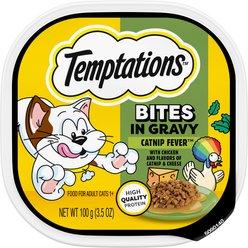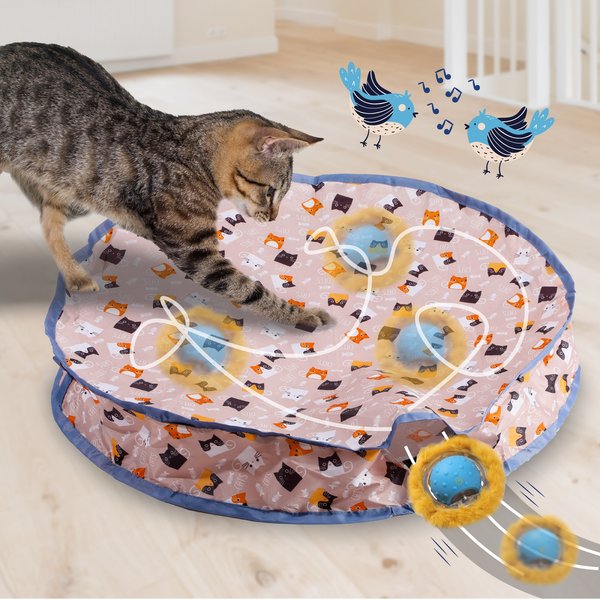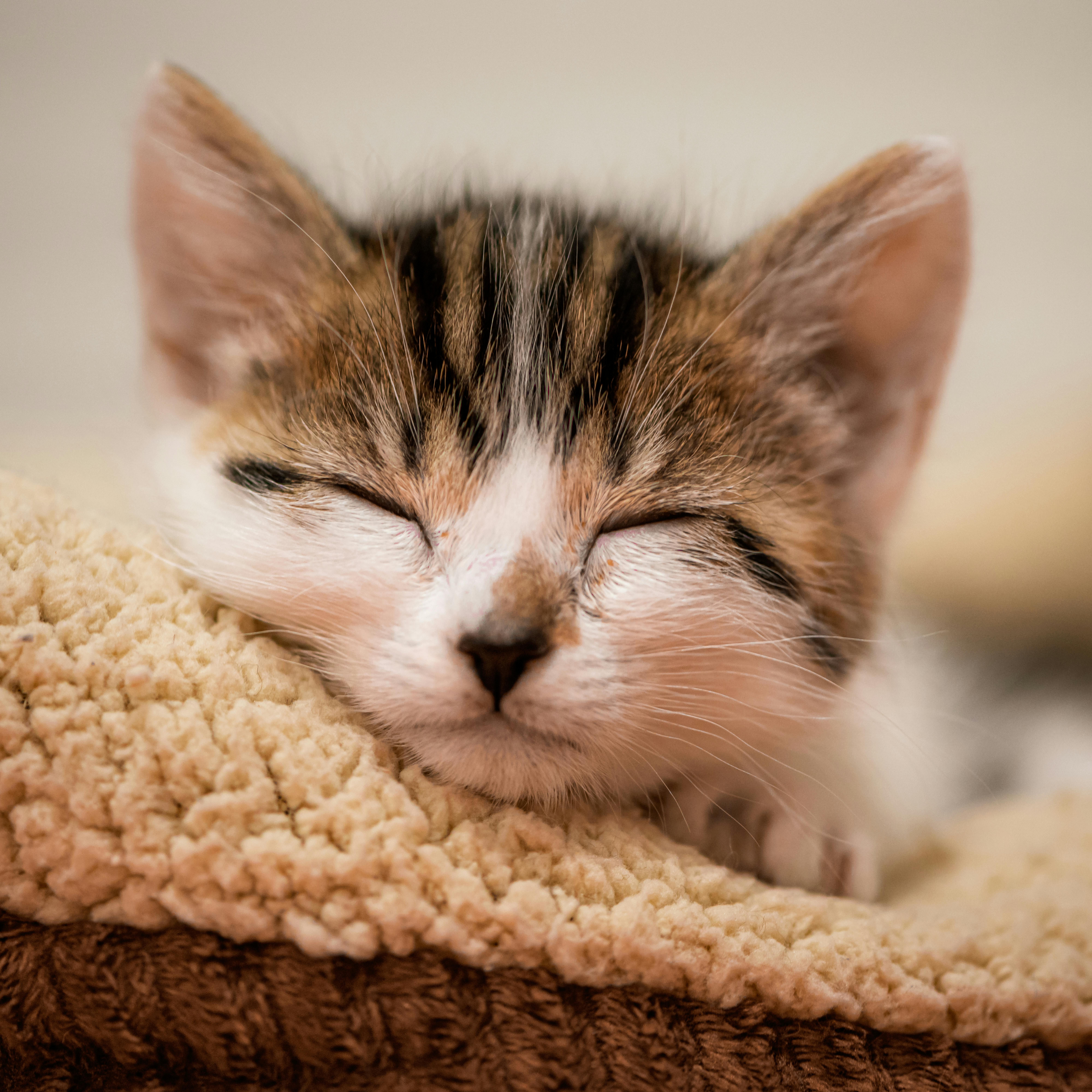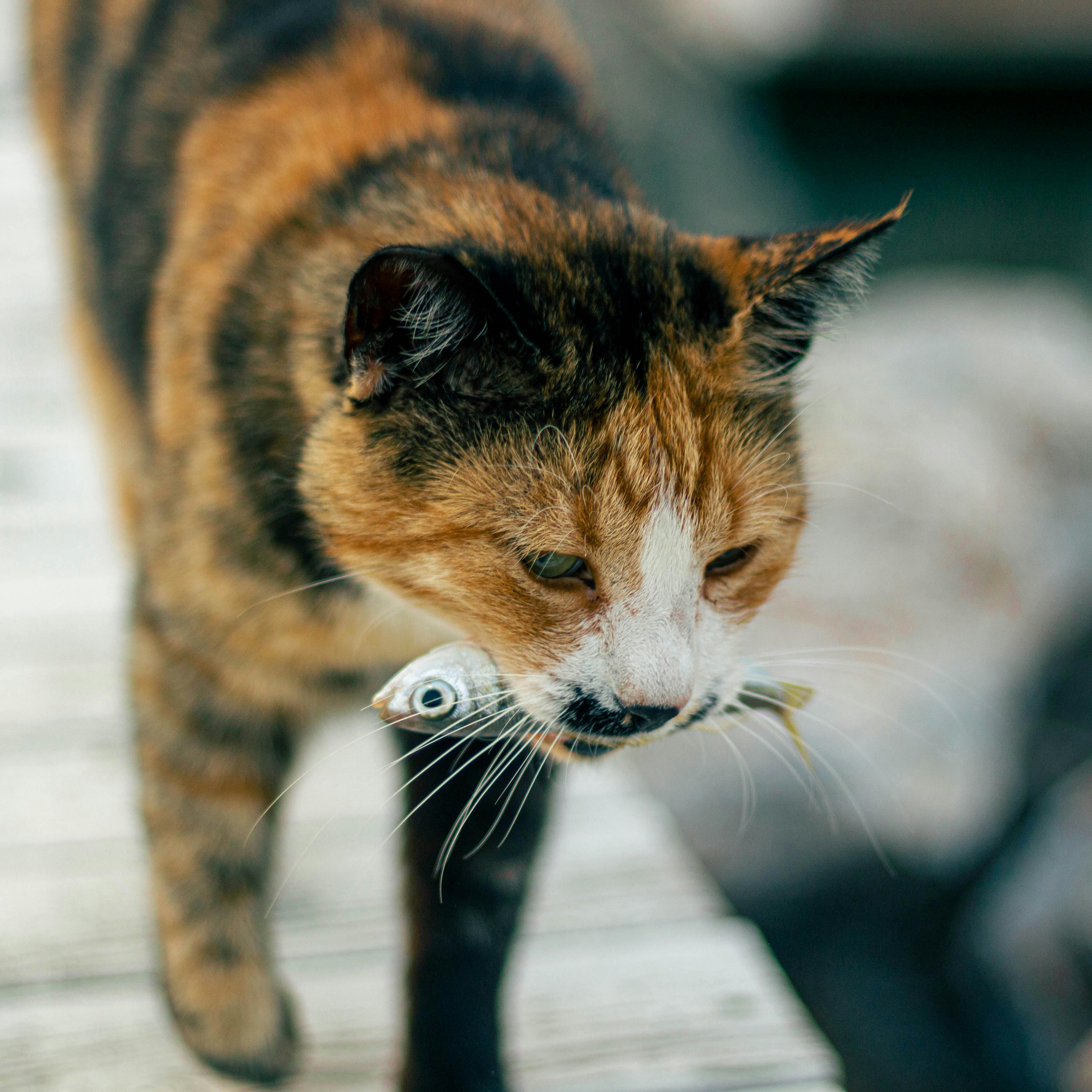

Is Your Cat Itchy or Having Digestive Problems? It Could Be a Food Allergy or Intolerance
Does your feline friend suffer from constant itching, vomiting, or diarrhea? The culprit might be lurking in their food bowl! Learn how to identify common cat food allergies and intolerances, and discover how to help your cat live a happier, healthier, and itch-free life.
Picky Eater or Something More? Recognizing Food Sensitivities in Cats
Does your cat turn their nose up at every new food you introduce? While some cats are naturally picky eaters, persistent refusal to eat or digestive upset after meals could signal more than just fussiness. It could indicate a food allergy or intolerance impacting their digestive system.
Unlike a true allergy, which involves an immune system response, a food intolerance is difficulty digesting a specific ingredient. However, both can manifest with similar symptoms, including vomiting, diarrhea, excessive gas, skin issues (itching, hair loss), and even respiratory problems. What’s causing these issues?
Beef, dairy, and fish are frequent offenders in cat food allergies. Chicken and grains like wheat or corn can also trigger problems. It’s important to note that common ingredients aren’t automatically problematic, but they’re worth exploring if issues arise. If you suspect a food sensitivity, consult your veterinarian. They can help you determine the underlying cause of your cat’s discomfort and recommend an appropriate diagnostic or dietary plan to improve their digestion and overall well-being.
Cat Food Allergy vs. Intolerance: What’s the Difference?
Understanding the difference between cat food allergies and intolerances is crucial, as both can significantly impact your feline friend’s health. While both involve adverse reactions to food, they manifest differently.
A cat food allergy triggers an immune system response. The body identifies a specific ingredient, usually a protein, as a threat and launches an attack. Common symptoms include skin issues like itching, redness, and hair loss, vomiting, diarrhea, and respiratory problems. In cats, common culprits include beef, fish, chicken, and dairy.
Food intolerances, on the other hand, don’t involve the immune system. They occur when the body has difficulty digesting a specific food component. This can lead to gastrointestinal distress, such as vomiting, diarrhea, gas, and bloating. These issues affect digestion because the body cannot properly break down the ingested food. While less severe than allergies, intolerances can still cause discomfort and long-term digestive issues if left unaddressed. Identifying the specific ingredient causing the problem, which could include artificial additives, grains, or even certain types of fiber, requires careful observation and potentially elimination diets in consultation with your veterinarian.

Photo by: Emre Ateşoğlu ([https://www.pexels.com/@emre-atesoglu-278506921])
Common Culprits: Identifying the Cause of Your Cat’s Digestive Issues
Is your feline friend experiencing frequent vomiting, diarrhea, or excessive gas? Digestive problems are more common than you might think, and often stem from sensitivities to ingredients in their food. While true allergies are less frequent than intolerances, both can wreak havoc on your cat’s digestive system.
So, what are the usual suspects? Chicken, fish, beef, and dairy are among the most common offenders. While cats are often portrayed as milk-loving creatures, many adult cats are actually lactose intolerant. Similarly, some cats develop sensitivities to the proteins found in common meat sources. Grains, while not a typical allergy, can also be difficult for some cats to digest, leading to inflammation and digestive upset.
It’s important to distinguish between an allergy and an intolerance. Allergies involve an immune system response, while intolerances are typically a digestive issue. Both can present with similar symptoms, but a cat food allergy may also involve skin issues like itching and hair loss. If you suspect your cat is reacting to something in their food, consult with your veterinarian. They can help you identify the trigger and recommend a suitable hypoallergenic or limited-ingredient diet to soothe your cat’s digestive woes and get them back to feeling their best.
Spotting the Signs: Recognizing Cat Food Allergy and Intolerance Symptoms
Is your feline friend suffering from mysterious ailments? It could be related to their food. While true cat food allergies are less common than intolerances, both can wreak havoc on your cat’s well-being, especially affecting their digestion. Understanding the common culprits and symptoms is key to providing relief.
Common cat food allergies often involve proteins like beef, fish, chicken, or dairy. Intolerances, on the other hand, might be triggered by additives, grains, or even specific types of fat. The symptoms can vary widely. Gastrointestinal issues are a major indicator. Look out for vomiting, diarrhea, excessive gas, or changes in stool consistency. These all point towards problems with digestion and nutrient absorption.
Beyond digestive upset, skin problems like itching, excessive grooming, hair loss, and skin rashes, particularly around the face, ears, and paws, can also signal food sensitivities. Respiratory issues, though less frequent, can manifest as coughing or sneezing. If you notice any of these symptoms persistently, consult with your veterinarian. They can help determine the underlying cause and recommend an appropriate diet to improve your cat’s digestion and overall health.

Photo by: Li Zetong ([https://www.pexels.com/@zetong-li-880728])
Skin-Related Symptoms of Food Allergies and Intolerances in Cats
If you suspect your feline friend is battling a cat food allergy or intolerance, one of the first places you might notice the effects is on their skin. These issues often manifest through a range of dermatological symptoms. It’s crucial to be observant because these signs can easily be mistaken for other issues.
Pruritus, or intense itching, is a major indicator. You might see your cat excessively scratching, licking, or biting at their skin, particularly around the head, neck, and paws. This constant irritation can lead to self-inflicted trauma like hair loss (alopecia), open sores, and secondary skin infections. Miliary dermatitis, small crusty bumps resembling millet seeds, is another frequent presentation. Redness, inflammation, and even skin thickening (lichenification) in chronic cases are also possible. Remember, addressing the underlying cause is paramount, and that often means pinpointing the problematic ingredient affecting your cat digestion. Consult your veterinarian if you observe any of these symptoms to rule out other conditions and explore hypoallergenic diet options. Early detection and dietary changes can significantly improve your cat’s comfort and overall health.
Identifying Digestive Distress in Cats with Food Sensitivities
Is your feline friend experiencing unpleasant symptoms like vomiting, diarrhea, excessive gas, or skin issues? These could be signs of cat food allergies or intolerances, which significantly impact digestion. Unlike true allergies, which involve the immune system, intolerances are difficulties digesting specific ingredients. Figuring out the culprit is key to restoring your cat’s digestive health.
Common allergens include beef, fish, chicken, and dairy. These proteins, frequently found in commercial cat foods, can trigger an allergic reaction in susceptible cats. Grain-based fillers like corn, wheat, and soy can also cause issues, especially in cats with sensitive stomachs, leading to inflammation and poor nutrient absorption.
Lactose intolerance is also prevalent in adult cats. Kittens can digest lactose in milk, but as they mature, their ability to produce the enzyme lactase decreases, making dairy products difficult to process. Consulting with your veterinarian is crucial for diagnosis and management. They can recommend elimination diets or allergy testing to pinpoint the offending ingredients and suggest suitable alternatives to support healthy digestion and a happy, comfortable life for your furry companion.

Photo by: Barış Yiğit ([https://www.pexels.com/@baris-yigit-239931604])
Other Behavioral Clues Your Cat May Have a Food Allergy
Beyond the typical vomiting and diarrhea, your cat’s cat food allergy or intolerance might manifest in unexpected ways. Changes in behavior are often overlooked but can signal a problem. An itchy cat might be more than just a cat – excessive scratching, even to the point of hair loss, particularly around the face, ears, paws, and groin, could indicate an allergic reaction to something in their food. Similarly, persistent licking, even without visible irritation, can be a sign of underlying discomfort.
Pay attention to their energy levels. A sudden drop in activity or reluctance to play could be linked to digestive issues. Some cats may also exhibit increased aggression or irritability due to the chronic discomfort caused by food sensitivities. Others might become withdrawn and reclusive.
It’s important to remember that these behavioral changes can also be caused by other health problems. However, if you notice a cluster of these symptoms alongside digestive upset, consider the possibility of a cat food allergy or intolerance. Consulting with your veterinarian is crucial for proper diagnosis and to rule out other underlying medical conditions. They can help you identify potential allergens and develop a suitable elimination diet to improve your cat’s health and happiness. Remember, observing subtle shifts in your cat’s behavior is key to understanding their overall well-being.
Diagnosis: How to Uncover the Source of Your Cat’s Digestive Issues
If your feline friend is experiencing chronic vomiting, diarrhea, or skin irritation, it might be more than just a sensitive stomach. Cat food allergies and intolerances are common culprits behind disruptions. But pinpointing the exact trigger can be a process of elimination.
The most common cat food allergies revolve around protein sources. Beef, fish, chicken, and dairy are frequent offenders. While less common, cats can also react to grains or additives in their food. An allergy involves an immune system response, while an intolerance means the body simply has difficulty processing a particular ingredient.
To accurately diagnose a cat food allergy or intolerance, your vet will likely recommend an elimination diet. This involves feeding your cat a novel protein and carbohydrate source – one they’ve never eaten before – for a period of 8-12 weeks. If symptoms improve, ingredients are gradually reintroduced to identify the specific allergen. This process helps rule out other potential causes and allows you to tailor your cat’s diet for optimal health and a happy tummy. Remember to always consult with your veterinarian before making any significant changes to your cat’s diet.
The Elimination Diet: A Step-by-Step Guide to Identifying Food Sensitivities
If your feline friend is experiencing digestive upset, skin issues, or other concerning symptoms, food sensitivities might be to blame. An elimination diet is a powerful tool to pinpoint the culprit. It involves temporarily removing suspected allergens from your cat’s diet and then gradually reintroducing them to observe their reaction. This process can be critical in improving your cat’s digestion and overall well-being.
Common cat food allergies often stem from protein sources like beef, chicken, and fish. Grains like corn and wheat can also be problematic. Intolerances, while not true allergies, can similarly trigger digestive distress. Symptoms can manifest as vomiting, diarrhea, excessive gas, or even skin irritation and itching.
The first step is to choose a novel protein and carbohydrate source your cat hasn’t been exposed to before. Options like rabbit, venison, or duck, paired with sweet potato or potato, are often used. Feed this exclusively for 8-12 weeks. If symptoms improve, you can begin reintroducing old ingredients one at a time, every few days, carefully monitoring your cat’s reaction. If symptoms return, you’ve likely identified a trigger. Always consult with your veterinarian before starting an elimination diet, as they can help you choose appropriate novel ingredients and rule out other potential medical causes for your cat’s digestive problems.
When to Seek Professional Help: The Veterinarian’s Role in Managing Food Allergies
Dealing with cat food allergies and intolerances can be incredibly frustrating for both you and your feline friend. While some dietary changes might seem simple, it’s crucial to understand when professional veterinary guidance becomes essential to protect your cat’s digestion and overall health.
Common cat food allergens often include proteins like beef, fish, and chicken, but also grains like wheat and corn. Intolerances, on the other hand, involve the digestive system struggling to process certain ingredients. Symptoms can range from skin issues (itching, redness, hair loss) to gastrointestinal upset (vomiting, diarrhea, gas).
If you notice persistent digestive problems – especially if accompanied by lethargy, weight loss, or significant changes in appetite – a visit to the vet is paramount. Don’t attempt a prolonged elimination diet without professional supervision. Vets can perform allergy tests (although these aren’t always definitive) and rule out other underlying medical conditions that might mimic cat food allergies. They can also guide you in selecting appropriate hypoallergenic or limited-ingredient diets specifically formulated to ease digestion. A vet’s expertise ensures accurate diagnosis and effective management, ultimately improving your cat’s quality of life.
Treatment Options: How to Manage Cat Food Allergies and Intolerances
If your feline friend is experiencing digestive upset, it could be due to a cat food allergy or intolerance. Common cat food allergies often stem from protein sources like beef, fish, and chicken, though dairy and even grains can be culprits. Intolerances, on the other hand, aren’t immune responses but rather difficulties in digesting certain ingredients. Lactose, for example, is a common intolerance that can lead to diarrhea and discomfort.
Recognizing these triggers is crucial for improving your cat’s digestion. Symptoms to watch for include vomiting, diarrhea, excessive gas, skin irritation (itching, redness, hair loss), and even respiratory issues. Once you suspect a cat food allergy or intolerance, consult your veterinarian. They can perform diagnostic tests or recommend an elimination diet. This involves feeding your cat a novel protein source and carbohydrate source they’ve never had before for several weeks.
By carefully monitoring your cat’s symptoms and working closely with your vet, you can pinpoint the offending ingredients and develop a suitable diet plan to ease their digestive distress and improve their overall well-being. Remember, addressing food sensitivities is key to a happy and healthy cat!
Hypoallergenic Cat Food: What to Look For When Choosing a Diet
Choosing the right food is crucial, especially if your feline friend struggles with food sensitivities. Hypoallergenic cat food can be a game-changer, but understanding common cat food allergies and intolerances is the first step. Many cats react to common protein sources like beef, chicken, and fish. These proteins, while nutritious for some, can trigger an immune response in sensitive cats, leading to skin problems, vomiting, or diarrhea.
Other common culprits include gluten, dairy, and artificial additives. These ingredients can negatively impact digestion, leading to inflammation and discomfort. Food intolerances, unlike allergies, don’t involve the immune system but still cause digestive upset.
When selecting hypoallergenic food, look for limited-ingredient diets featuring novel protein sources like duck, venison, or rabbit. These less common proteins are less likely to trigger an allergic reaction. Also, opt for grain-free options and avoid artificial colors, flavors, and preservatives. Reading the ingredient list carefully is essential to ensure optimal digestion and overall well-being. Consulting with your veterinarian is always recommended for personalized advice and to rule out other potential health issues.
Limited Ingredient Diets: Simplifying Your Cat’s Food for Better Digestion
If your feline friend is experiencing tummy troubles, a limited ingredient diet (LID) might be the answer. Many cats suffer from cat food allergies and intolerances that disrupt their digestion, leading to uncomfortable symptoms. Understanding common culprits is the first step towards finding relief.
One frequent offender is protein. While cats are obligate carnivores, certain protein sources like beef, dairy, and fish are common allergens. These proteins can trigger an immune response, resulting in vomiting, diarrhea, skin irritation, and excessive scratching. Grains like wheat, corn, and soy are also often implicated in sensitivities, causing similar digestive upset.
Food intolerances, on the other hand, don’t involve the immune system but can still cause significant discomfort. These occur when your cat’s digestive system struggles to properly break down certain ingredients. Artificial colors, flavors, and preservatives can also irritate the gut.
A limited ingredient diet aims to minimize potential allergens by using a single, novel protein source (one your cat hasn’t been exposed to before, like duck or venison) and a limited number of easily digestible carbohydrates. By simplifying your cat’s diet, you can help pinpoint the cause of their digestive issues and promote a healthier, happier tummy.
Long-Term Management: Keeping Your Cat Comfortable and Healthy for Years to Come
Maintaining your cat’s well-being long-term involves understanding potential health challenges. One common area of concern is food sensitivities, which can significantly impact digestion and overall comfort. While often used interchangeably, cat food allergies and intolerances differ. Allergies involve an immune response to a specific ingredient, commonly a protein source like beef, chicken, or fish. Intolerances, on the other hand, are non-immune related and often involve difficulty digesting a particular ingredient.
Symptoms of both can manifest in various ways, including skin irritation (itching, redness), gastrointestinal upset (vomiting, diarrhea), and even respiratory issues. Identifying the culprit ingredient is crucial for effective management. An elimination diet, guided by your veterinarian, is the gold standard. This involves feeding your cat a novel protein and carbohydrate source for several weeks, then gradually reintroducing potential allergens to observe their reaction.
Remember, proper digestion is essential for nutrient absorption and overall health. By understanding common cat food allergies and intolerances and working closely with your vet, you can ensure your feline friend enjoys a comfortable and healthy life free from digestive distress.
Decoding Cat Food Labels: What to Look For and What to Avoid for Sensitive Cats
When navigating the overwhelming world of cat food labels, understanding common cat food allergies and intolerances is crucial, especially if your feline friend experiences sensitive digestion. Unlike true allergies, which trigger an immune response, intolerances are digestive issues. Both can manifest as vomiting, diarrhea, itchy skin, and excessive grooming.
Beef, dairy, and fish are among the most common culprits in cat food allergies. Other potential allergens include chicken, soy, and corn. Many lower-quality cat foods use these ingredients as inexpensive fillers, potentially leading to digestive upset. Look for limited-ingredient diets that avoid these common allergens. These diets contain a single protein source and a small number of carbohydrates, making it easier to identify and eliminate potential triggers.
Carefully examine the ingredient list, paying close attention to the first few ingredients, as these make up the bulk of the food. Avoid foods listing generic “meat by-products” or unnamed “animal fats.” Opt for foods with clearly identified protein sources like “chicken” or “turkey” and avoid artificial colors, flavors, and preservatives, as these can also irritate your cat’s digestive system. Consulting with your veterinarian is always the best approach to identifying specific allergies and finding the perfect food to support your cat’s digestive health.
Preventing Cross-Contamination: Keeping Your Cat Safe from Allergens
Understanding your cat’s sensitivities is crucial for their overall health and well-being. While preventing cross-contamination primarily focuses on avoiding foodborne illnesses, it’s equally important to be aware of common cat food allergies and intolerances to safeguard your cat digestion and prevent unpleasant reactions. Food allergies trigger an immune response, while intolerances are digestive system issues. Both can manifest in various ways, including vomiting, diarrhea, skin irritation (itching, redness, hair loss), and even respiratory problems.
One of the most common culprits behind cat food allergies is protein, specifically beef, fish, and chicken. While these are frequent ingredients, some cats develop sensitivities over time. Gluten, found in wheat, corn, and soy, can also cause digestive distress in sensitive cats. Similarly, dairy products are known to cause intolerance due to lactose. If you suspect your cat has a cat food allergy or intolerance, consulting your veterinarian is vital. They can help identify the offending ingredient through elimination diets. Once you pinpoint the problem, meticulously reading food labels becomes paramount. Always ensure you’re not accidentally introducing the allergen, preventing further issues with your cat digestion.
Conclusion: Empowering You to Care for Your Cat’s Digestion
Understanding common cat food allergies and intolerances is crucial for maintaining optimal digestion and overall health. Now that you’re armed with this knowledge, you can take proactive steps to ensure your feline friend enjoys a comfortable and happy life. Remember, identifying the culprit behind digestive upset requires patience and careful observation. Keep a detailed food diary, noting any changes in your cat’s stool, appetite, or behavior after meals.
Don’t hesitate to consult with your veterinarian. They can perform allergy testing, recommend appropriate dietary changes, and rule out any underlying medical conditions. A hypoallergenic or limited-ingredient diet might be the answer to relieving your cat’s symptoms and improving their digestion. Be sure to transition slowly to any new food to prevent further digestive distress.
Ultimately, being informed about potential allergens and intolerances empowers you to make informed choices about your cat’s diet. By working closely with your vet and paying close attention to your cat’s individual needs, you can ensure they receive the nourishment they need while minimizing the risk of digestive upset and promoting long-term well-being.
Final Thoughts
Navigating cat food allergies and intolerances can feel overwhelming, but understanding these common issues is the first step towards a happier, healthier feline companion. Remember, every cat is unique, and what works for one might not work for another. By being observant, working closely with your veterinarian, and diligently investigating potential dietary triggers, you can unlock the secret to your cat’s optimal well-being. Now it’s your turn to share this knowledge! Help us spread awareness about cat food allergies and intolerances by sharing this post with other cat owners and lovers. Together, we can empower each other to make informed decisions and strengthen the incredible bond we share with our feline friends.

